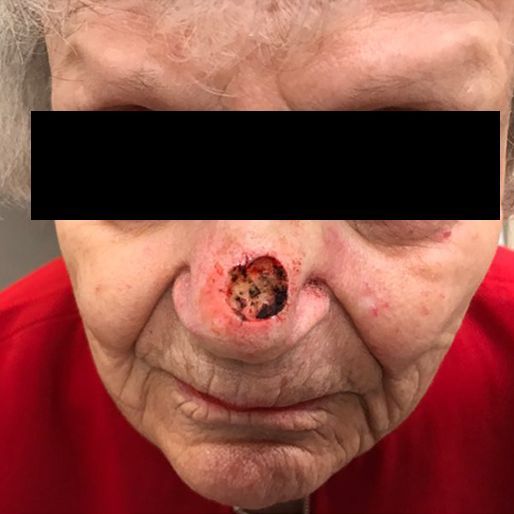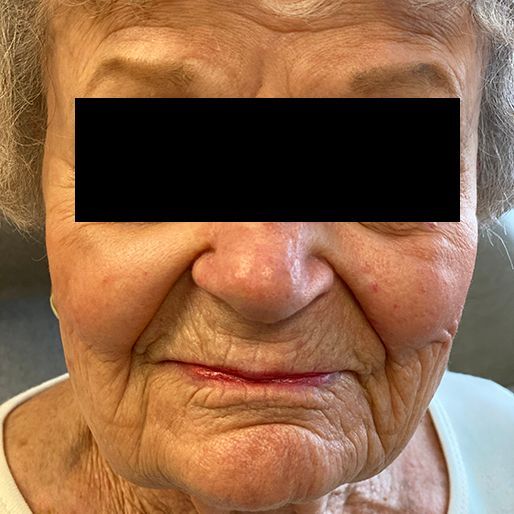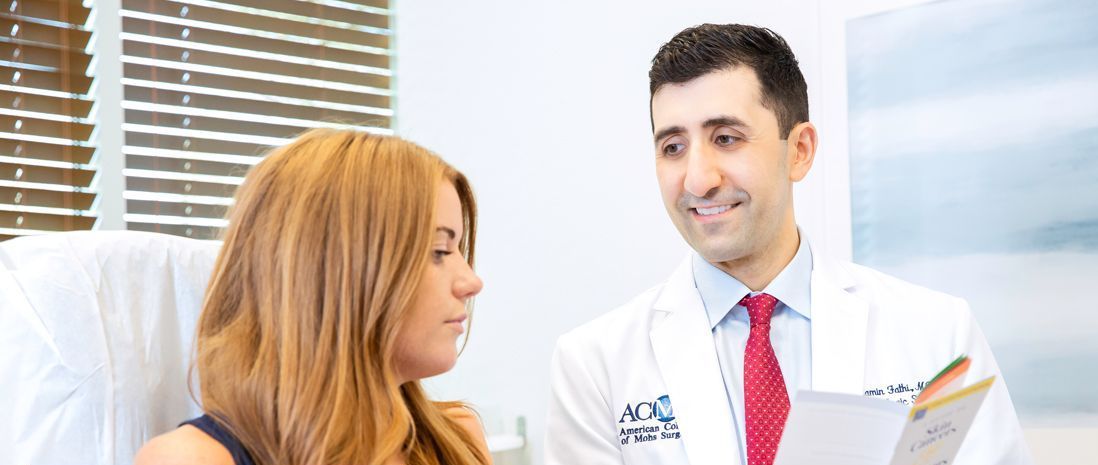Reconstructive Surgery After Mohs
Restore function and appearance with expert reconstruction following skin cancer removal.
Rebuilding Confidence and Comfort After Skin Cancer Removal
Mohs micrographic surgery is one of the most precise and effective methods for removing skin cancer, especially in areas where tissue preservation and cosmetic outcome are critical. However, after Mohs surgery removes the cancerous tissue, a wound or defect remains where the tumor once was. The next crucial step is reconstructive surgery—a procedure designed to repair the defect, restore function, and achieve the most natural cosmetic result.
At Phoenix Surgical Dermatology Group, our fellowship-trained Mohs surgeon,
Dr. Ramin Fathi, specializes in both skin cancer removal and expert reconstructive surgery. We are dedicated to providing exceptional care with personalized treatment plans to ensure the best possible outcomes for our patients.
What Is Reconstructive Surgery After Mohs?
Reconstructive surgery after Mohs surgery involves carefully repairing the wound or surgical defect left after the removal of skin cancer. The primary goals of reconstruction are to:
- Restore normal function of the affected area (especially critical for regions like the nose, lips, eyelids, ears, and fingers).
- Minimize scarring and disfigurement for the best cosmetic outcome.
- Promote
healthy, natural healing and prevent complications.
Each reconstruction is customized to the individual, taking into account the
size, depth, location, and
shape of the defect, as well as the patient’s overall health and aesthetic goals.
How Is a Defect Repaired Using Reconstructive Surgery?
There are several surgical techniques available to repair wounds following Mohs surgery. The method chosen depends on the complexity and location of the defect.
Common Techniques Used in Mohs Reconstruction:
- Primary Closure (Linear Repair): Simple stitching of the wound edges together in a straight line when the defect is small and located in areas with sufficient loose skin.
- Flap Repair (Local Tissue Rearrangement): Moving adjacent healthy skin into the wound area. Flap repair is often used in areas where direct closure would cause distortion or tension, such as the face.
- Skin Graft: Transplanting skin from another area of the body (donor site) to cover the defect. This may be used when there is not enough local tissue available for flap repair.
- Secondary Intention Healing: Allowing the wound to heal naturally on its own without stitches. This method may be chosen for certain small wounds in low-tension areas.
Your
fellowship-trained Mohs surgeon will discuss the recommended repair option with you based on your specific case and goals.
The Benefits of a
Fellowship-Trained Mohs Surgeon for Reconstruction
While any board-certified dermatologist or plastic surgeon may offer Mohs surgery or skin cancer reconstruction, only members of the American College of Mohs Surgery (ACMS) have undergone rigorous fellowship training focused solely on skin cancer removal and advanced reconstructive techniques.
What Sets Fellowship-Trained Mohs Surgeons Apart?
- Completion of a 1 to 2-year post-residency fellowship with intensive, hands-on training in over 500 Mohs surgery cases.
- Specialized experience in both
cancer removal and
reconstruction techniques to ensure optimal results.
- Advanced skills in achieving the
best cosmetic and functional outcomes, especially in sensitive areas like the face.
- Reduced risk of recurrence with
precise margin control and comprehensive reconstruction planning.
At Phoenix Surgical Dermatology Group,
Dr. Ramin Fathi provides expert care with the highest level of training and experience.
Is Reconstructive Surgery After Mohs Safe?
Yes, reconstructive surgery after Mohs is typically performed as an outpatient procedure under local anesthesia, which significantly lowers the risk associated with general anesthesia. This approach is:
- Safer for most patients, including older adults and those with medical conditions.
- Cost-effective, as it avoids unnecessary facility and anesthesia fees.
- Supported by Medicare data showing that the majority of post-Mohs reconstructive procedures are successfully performed by dermatologic Mohs surgeons.
What Should I Expect During Recovery After Reconstructive Surgery?
The Recovery and Healing Process Includes:
The treated area may feel
sore, red, or swollen for the first few days.
Mild drainage from the wound is common.
Follow all wound care instructions, including proper cleansing and application of topical medications as directed.
Attend your
follow-up appointment within
1 to 2 weeks to evaluate healing and suture removal (if applicable).
Full healing may take up to
12 months, with scars typically improving in color and texture over time.
In some cases, a secondary procedure may be recommended to refine the reconstruction or optimize the aesthetic result.
Frequently Asked Questions About Reconstructive Surgery After Mohs
Will I have a scar after reconstructive surgery?
Yes, any surgical procedure will result in some scarring. However, our specialized techniques aim to minimize scarring and optimize cosmetic outcomes, especially in visible areas like the face.
How long does reconstructive surgery after Mohs take?
The length of the procedure varies depending on the size and complexity of the defect. Some repairs are quick, while more complex flaps or grafts may take longer.
Is general anesthesia required for Mohs reconstruction?
No, most reconstructive surgeries after Mohs are performed under local anesthesia in our outpatient facility, making the process safer and more convenient.
Can reconstruction be done on the same day as Mohs surgery?
In many cases, reconstruction is performed immediately after Mohs surgery once clear margins are confirmed. Your surgeon will discuss the timing based on your treatment plan.
What can I do to help my scar heal better?
Follow all post-operative care instructions, avoid sun exposure, use recommended scar treatments (such as silicone gel), and attend all follow-up visits for monitoring.
Schedule Your Skin Cancer and Reconstruction Consultation Today
If you’ve been diagnosed with skin cancer or are considering Mohs surgery and reconstruction, trust Dr. Ramin Fathi and the team at Phoenix Surgical Dermatology Group for expert, compassionate care. Our fellowship-trained approach ensures precise cancer removal and advanced reconstruction for the best possible results.
Contact us today to schedule your consultation and learn more about your treatment options.







